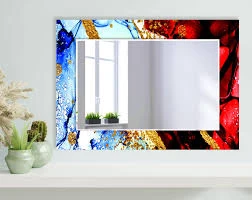

The Emergence of Low Energy Glass A New Era in Sustainable Architecture
In an age where environmental concerns are paramount, the demand for sustainable building materials has surged. Among these, low energy glass stands out as a revolutionary innovation that promises to enhance energy efficiency in architectural designs while maintaining aesthetic appeal. This article delves into the characteristics, benefits, and applications of low energy glass, highlighting its significance in modern construction practices.
Understanding Low Energy Glass
Low energy glass, often referred to as low-E glass, is a type of energy-efficient glass that has been treated with a transparent coating to reduce the amount of ultraviolet (UV) and infrared light that can pass through it. This special coating reflects heat back into the building during winter while allowing optimal sunlight to enter, thus reducing the need for artificial heating and cooling. The result is a more controlled indoor climate, leading to substantial energy savings.
There are different types of low energy glass, including low-E coatings, which can be classified into two main categories hard coat and soft coat. Hard coat low-E glass is manufactured through a process that results in a durable surface, while soft coat glass features a more delicate coating that provides superior performance in terms of thermal insulation. Depending on the specific needs of a building, architects and engineers can choose the appropriate type of low energy glass to achieve the desired balance between light transmission and energy conservation.
Benefits of Low Energy Glass
1. Energy Efficiency By minimizing heat loss during colder months and reducing heat gain during warmer months, low energy glass plays a pivotal role in enhancing energy efficiency in buildings. Studies have shown that using low-E glass can reduce overall energy consumption by up to 30%, which is crucial for lowering operational costs and carbon footprints.
2. Increased Comfort Low energy glass contributes to a more comfortable indoor environment. By reducing temperature fluctuations, it ensures that indoor spaces remain pleasant throughout the year. Furthermore, because low-E glass limits the entry of harmful UV rays, it protects furnishings and finishes from fading, creating a more appealing aesthetic over time.

3. Sustainability In line with global efforts to combat climate change, the adoption of low energy glass significantly contributes to sustainable architecture. Buildings equipped with low-E glass can attain LEED certification – a framework for identifying and implementing practical and measurable green building design, construction, operations, and maintenance solutions.
4. Versatile Design Options The versatility of low energy glass allows architects to innovate while adhering to energy efficiency standards. Available in various styles and tints, it can be seamlessly integrated into residential, commercial, or industrial buildings without compromising design integrity.
Applications in Architecture
Low energy glass is used across a spectrum of architectural applications, from residential homes to large commercial complexes. In high-rise buildings, it helps manage heat gain while providing inhabitants with unobstructed views of the surroundings. For retail spaces, it allows natural light to illuminate products, enhancing the shopping experience while minimizing reliance on artificial lighting. Moreover, in greenhouses, low energy glass optimizes plant growth by allowing optimal light exposure while regulating temperature.
In recent years, the trend towards net-zero energy buildings has seen an increased reliance on low energy glass solutions. Architects are not only focused on maximizing energy efficiency but also on achieving a harmonious balance between functionality and design aesthetic. The transparent nature of low energy glass enhances the visual connection between indoor and outdoor spaces, promoting a sense of well-being.
Conclusion
In summary, low energy glass represents a significant advancement in the quest for sustainable architecture. With its ability to optimize energy consumption, enhance indoor comfort, and contribute to the aesthetic value of buildings, it is becoming an indispensable material in modern construction. As the architectural community continues to prioritize sustainability, the incorporation of low energy glass will likely expand, paving the way for a more energy-efficient and environmentally responsible future. Embracing such innovations is not just an option, but a necessity to ensure that we protect our planet for generations to come.